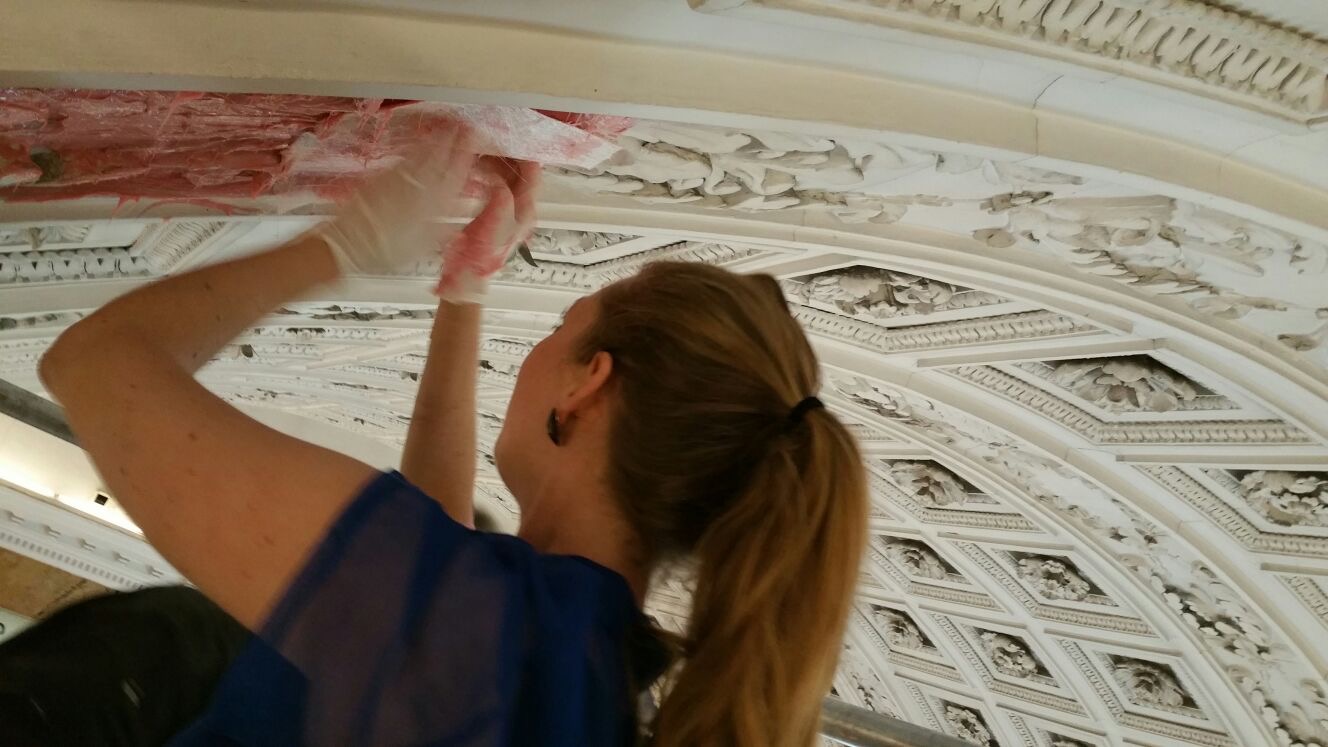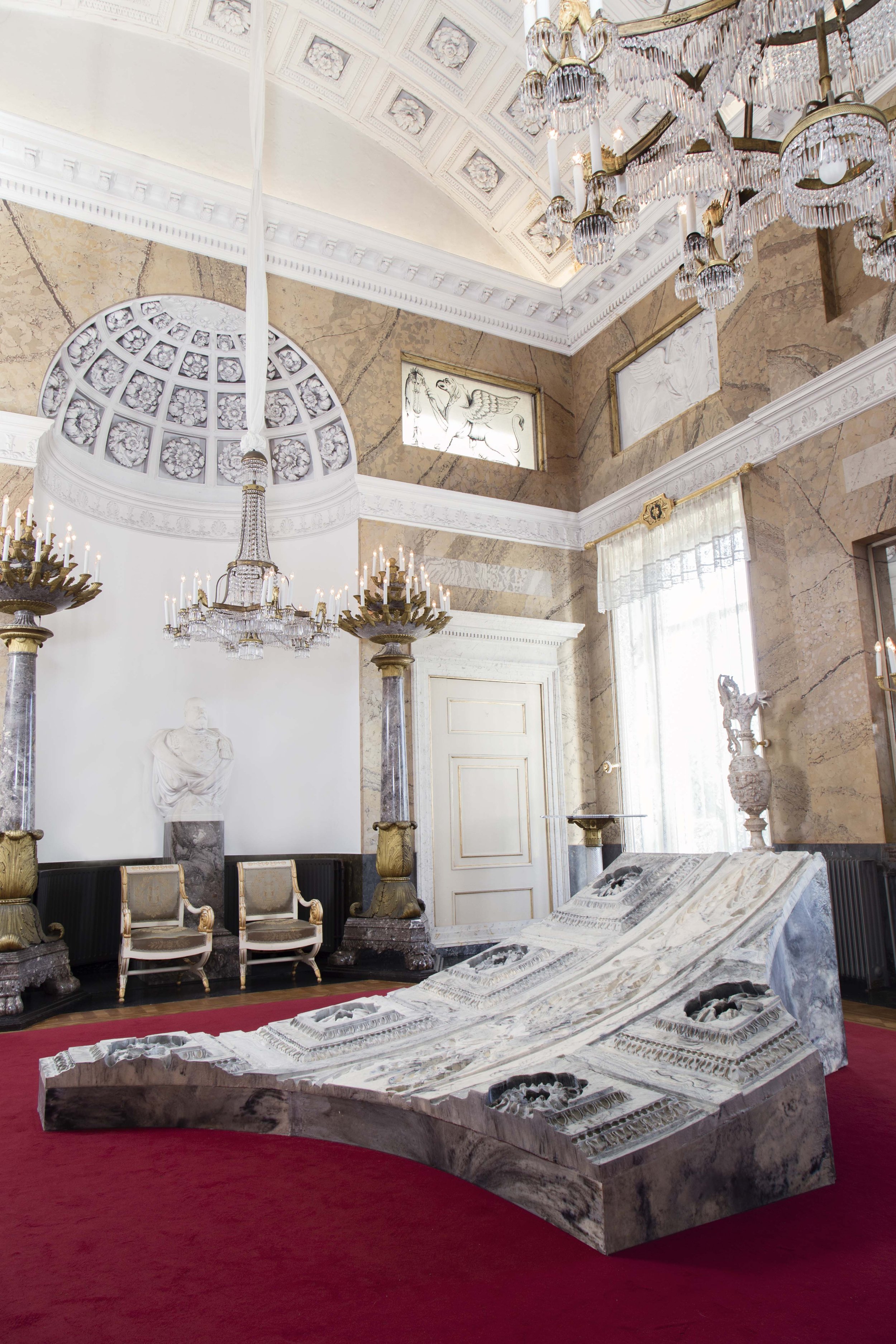Pallas Athena (left side) at Big Art Amsterdam
BALL at the Dutch Palace of Soestdijk
Summer 2016 the Park and Palace Soestdijk was acquired by BALL !: a colorfull exhibition by more than 40 leading artists and designers from the Netherlands.They deceive, twist, surprise and entertain with exciting, crazy, happy and moving - often interactive - artworks. Each work relates to the palace and it’s former inhabitants. From 1937 it was the residence of Princess and later Queen Juliana and Prince Bernhard of the Netherlands. Since 1971 it is the property of the State of the Netherlands.
Especially for me the famous Stuczaal (Stucroom) got selected! I have created a special new work based on the history of the room. The Stucroom is core of the original 17th century hunting lodge of King William III. The room is full of ornaments that give a trompe l'oeil effect. It is the architectural and ceremonial heart of the building where great receptions and parties were held. The first time I looked at the ceiling; I knew instead I wanted to put it into rubber!
Pallas Athena
One of the facets that inspired me the most in the Palace is the symmetry in the architecture. In addition to the Empire style that characterizes the architecture of the building, the symmetry plays a big role. Mainly in the Stucroom, mirrored everything. Where there is a door on the left this automatically means that there should be one on the right too. These reflections reminded me of Villa Rotonda, by the architect Palladio, which I visited in 2012. Andrea Pietro della Gondola, who took the name Palladio, is for me one of the most influential architect of the late Renaissance. By the developments of that period, he developed a rigorous, quiet style. He went back to the classic rules of proportions and called Vitruvius his only teacher. With this, he ushered in classicism.He discovered his architectural qualities and gave himself the name Palladio, after the Greek goddess Pallas Athena. The undisputed highlight is the Villa Rotonda (1556), a central building with four identical symmetrical facades. 'Like Palladio I wanted to create a harmonious whole with my design in space'.
One of the main memories of Soestdijk palace for the Dutch is the parade. At the time of Queen Juliana this parade was held on here birthday of April 30. The whole royal family stood on the steps of main terrace of the palace. Many Dutch and overseas citizens walked along the kilometer-long procession and gave gifts, and especially flowers. The shape of this terrace/ platform I mirrored into the stuczaal. This created the big rounding in the work. The smaller curve is a tribute to Queen Juliana. The empty space reflects the symmetrical smaller curve and is the place where she stood to receive her guests. Not only the floorplan of the palace gave the symmetrical form to the object. It is the ceiling that gives the objects a three-dimensional shape. The objects give a rotation to the space by mirroring the ceiling. Visitors are allowed to lie on the objects in the exhibition and experience what the space does to your perception. With a very costly imitation marble, the walls in the stuczaal are edited. The plastered marble hence the eponymous name for the room. With my material techniques I created my own marble look, made of rubber! Marble as soft as a pillow!
Process casting Palace of Soestdijk
Process casting Palace of Soestdijk
Pallas Athena during BAL at the Royal Palace of Soestdijk
Nynke Koster laying on Pallas Athena
Pallas Athena at Museum Jan Cunen










